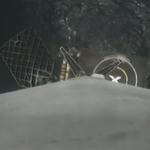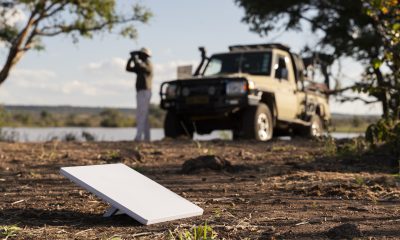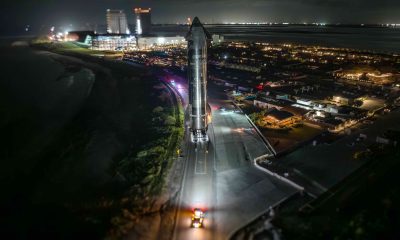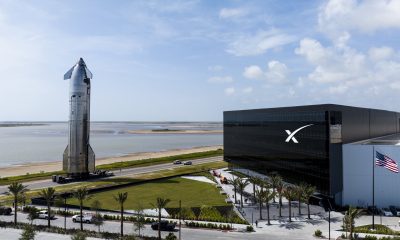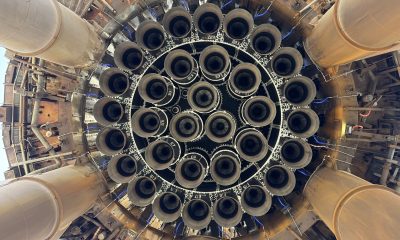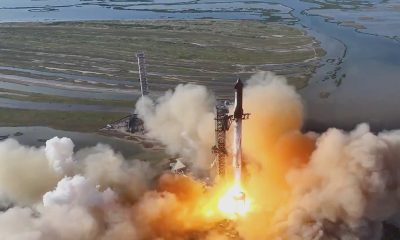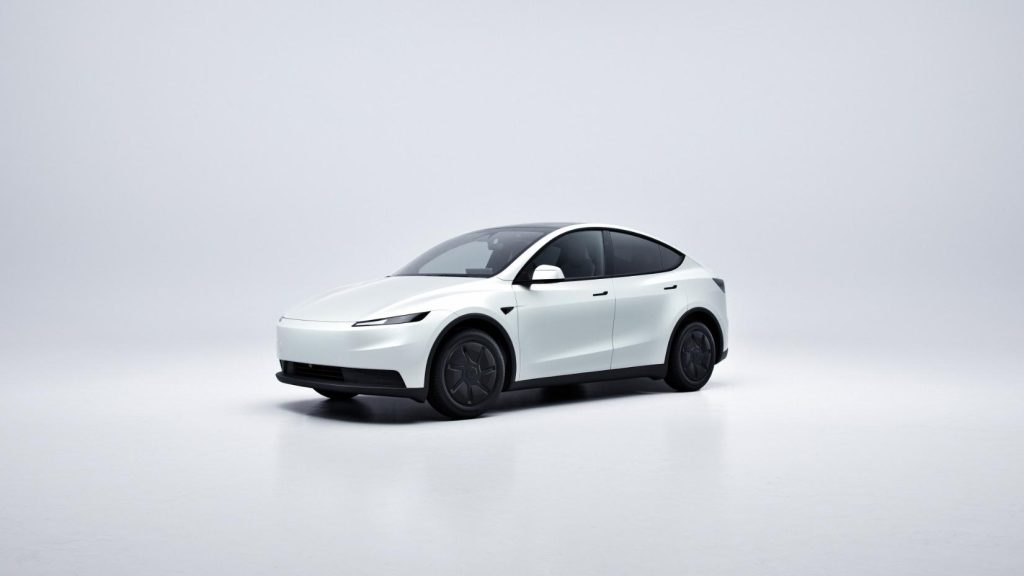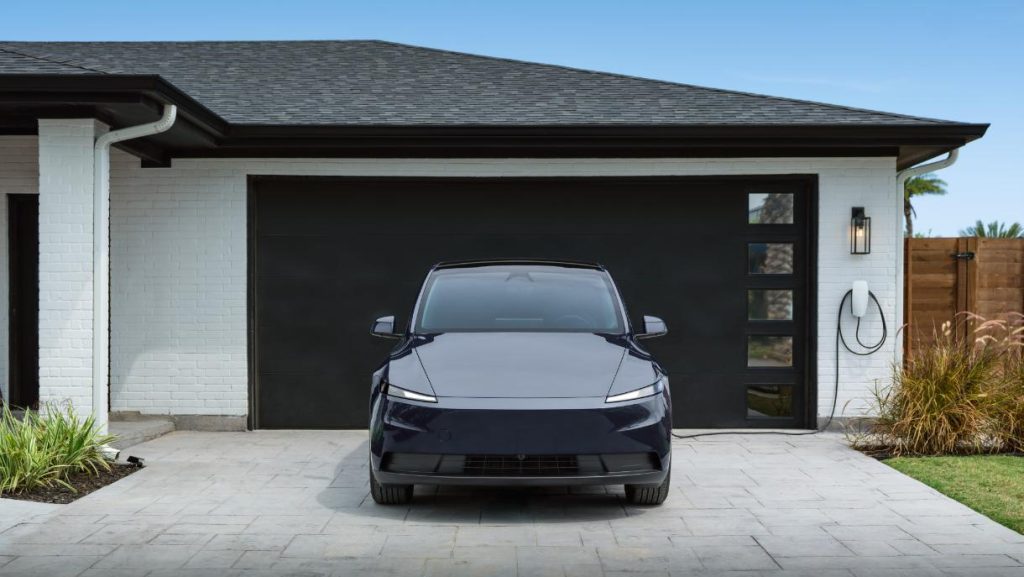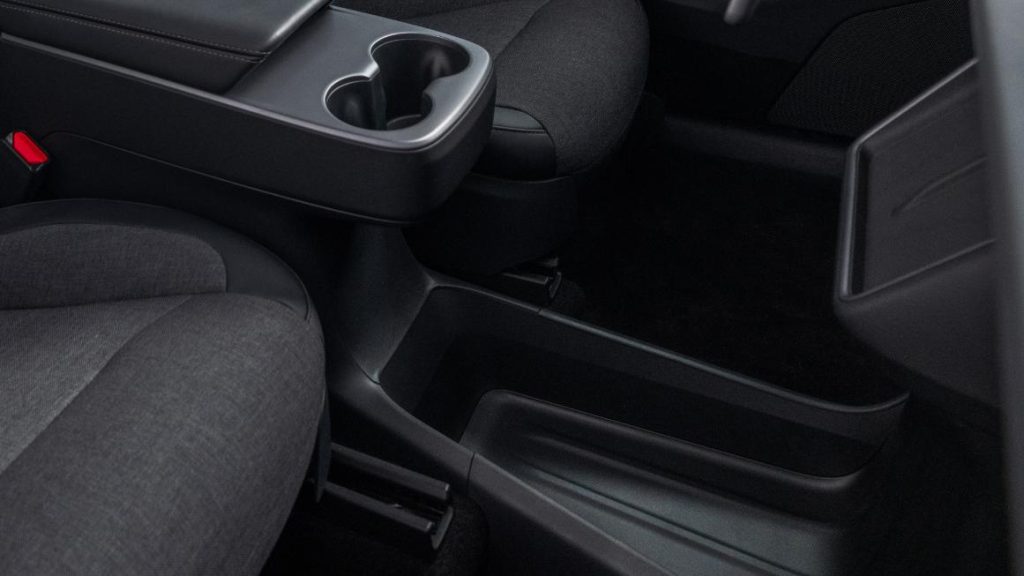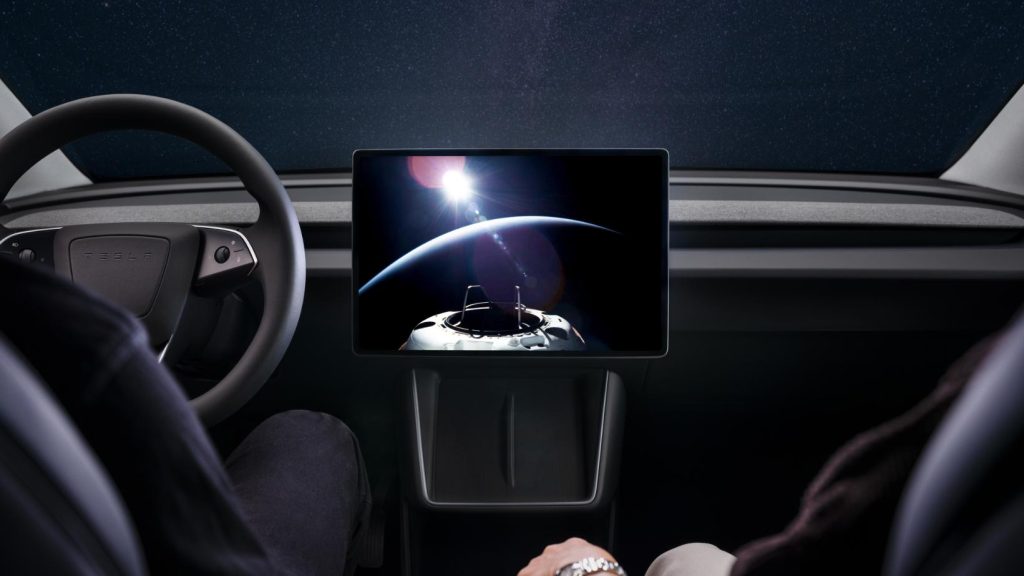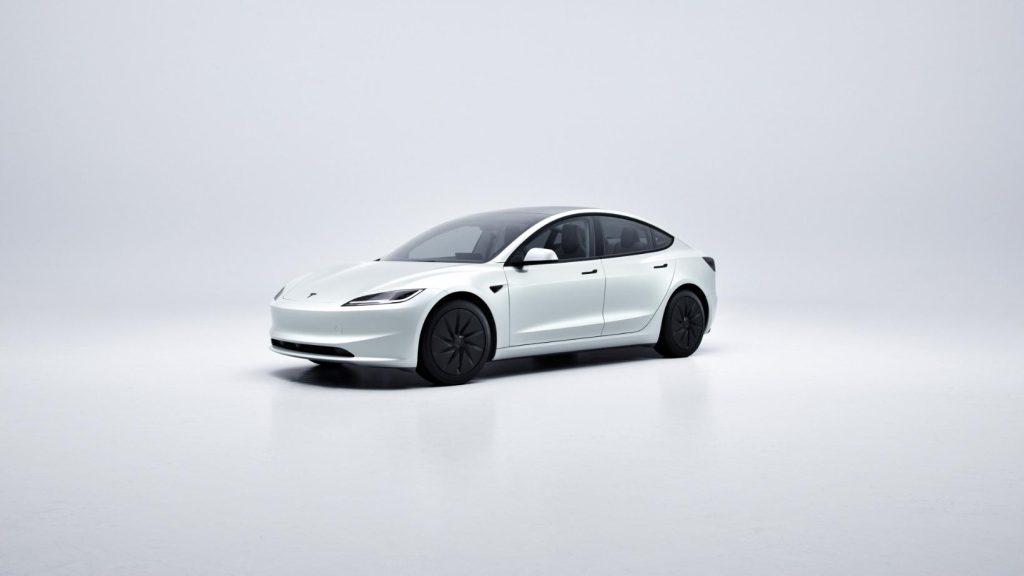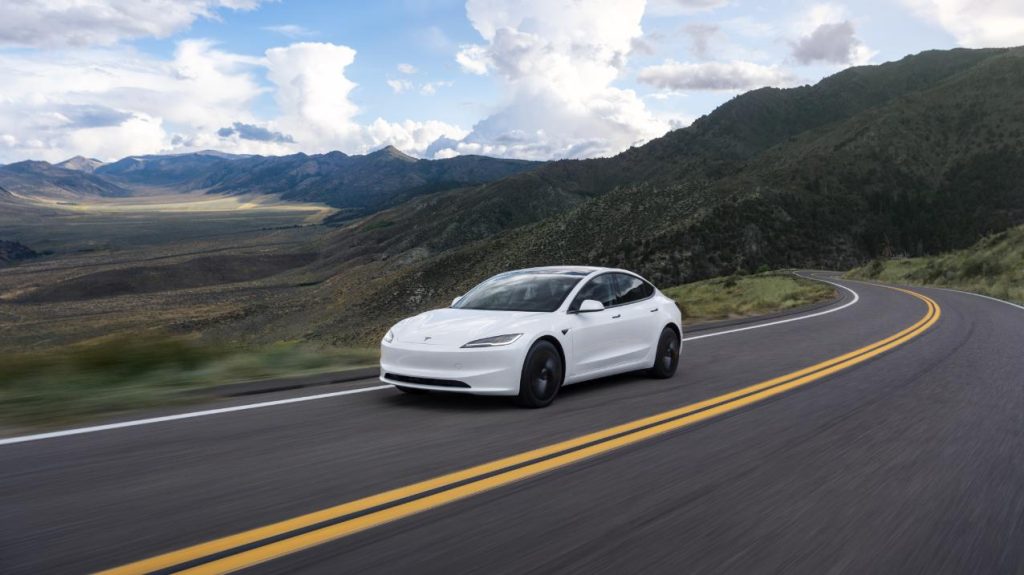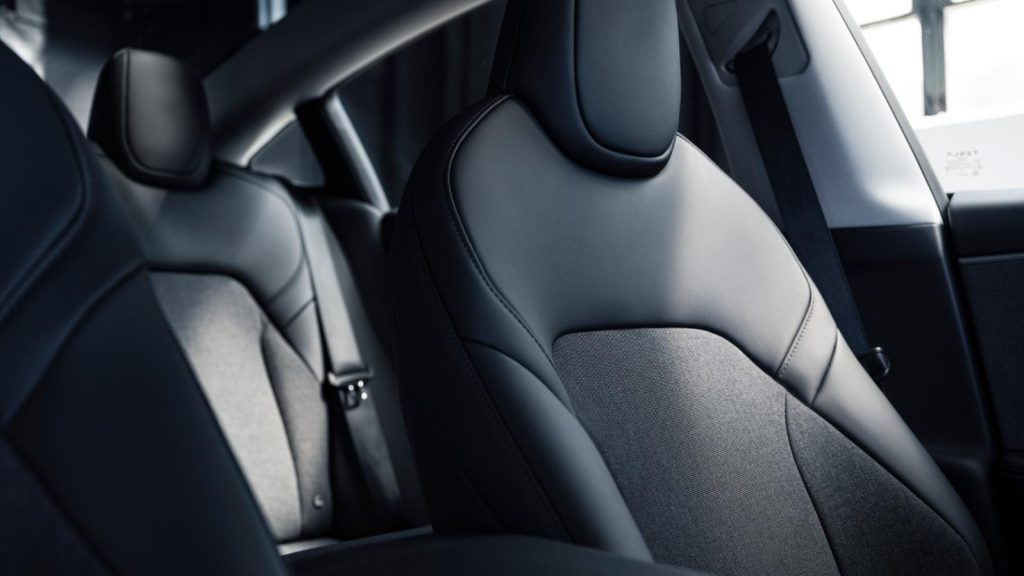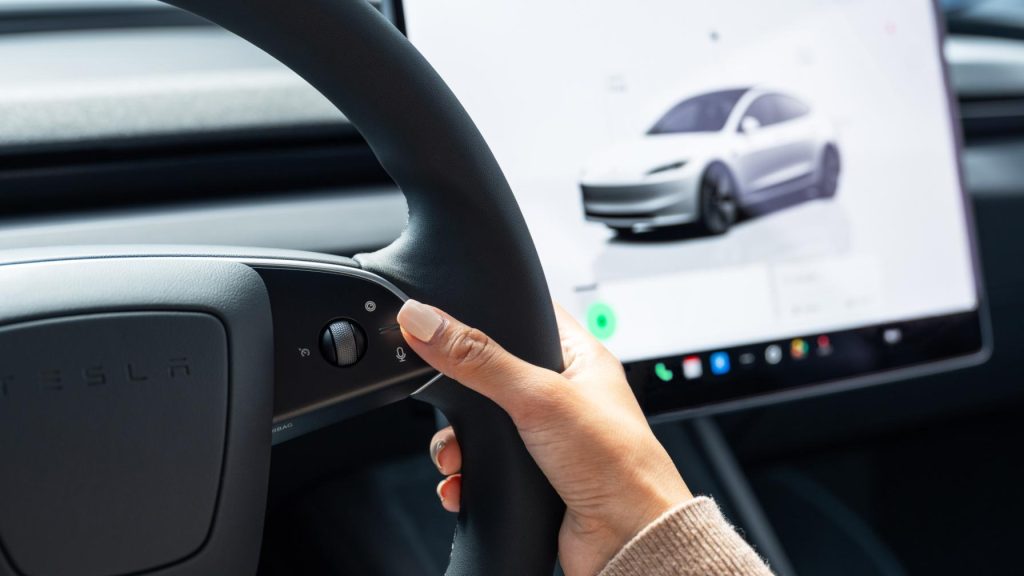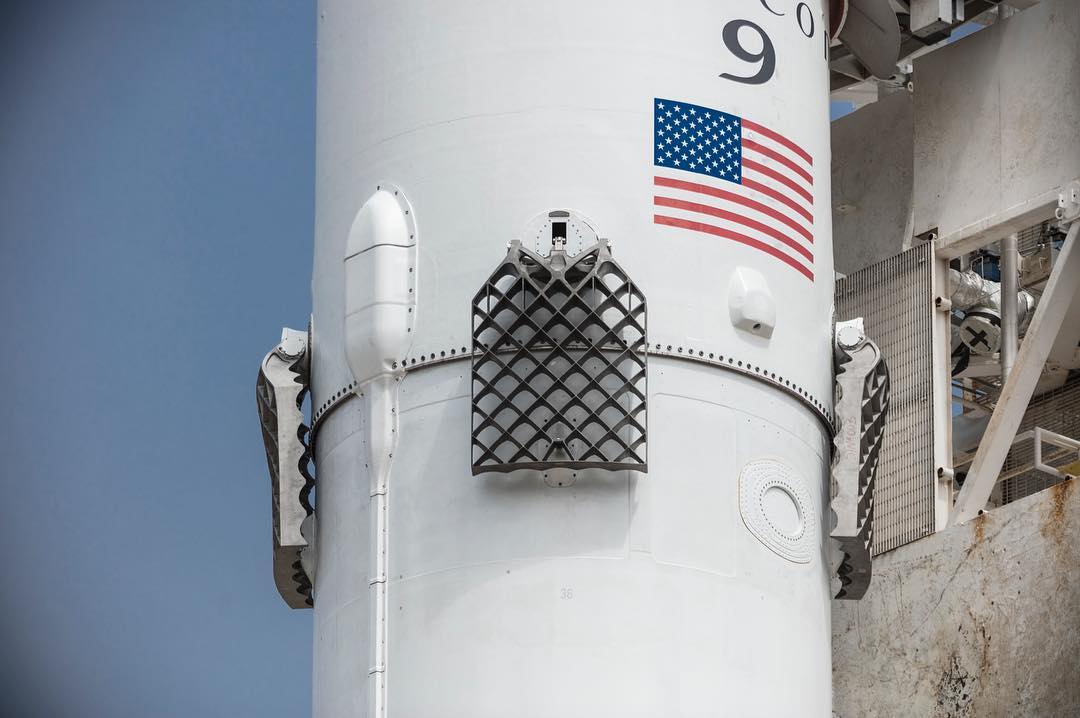
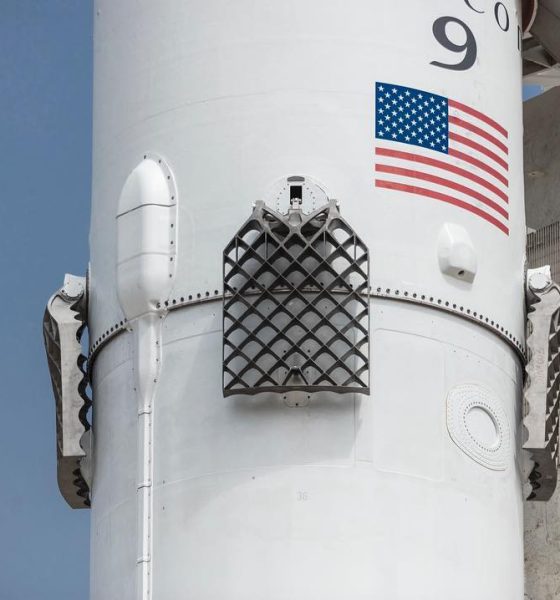
News
SpaceX completes two Falcon 9 launch-and-recovers in less than 48 hours
SpaceX has successfully launched its second Falcon 9 mission in less than 48 hours, lifting 10 Iridium NEXT satellites into Low Earth Orbit and recovering the first stage in the Pacific Ocean in spite of sub-optimal weather conditions.
This launch saw the debut of improved titanium grid fins on the first stage of Falcon 9, providing the vehicle with better control authority and greater ease of reuse. One distinct benefit of these new grid fins is that they no longer require an ablative coating of heat-resistant paint like their aluminum predecessors. In the past, this paint would vaporize in the heat of reentry and cover the camera housing on the first stage, interrupting SpaceX’s live coverage of the landing attempt. This launch demonstrated nearly perfect coverage of that landing, with the titanium fins requiring no paint. Musk also tweeted just after launch that the improved fins worked even better than expected and should offer almost effectively unlimited reuse without refurbishment.
New titanium grid fins worked even better than expected. Should be capable of an indefinite number of flights with no service.
— Elon Musk (@elonmusk) June 25, 2017
Falcon 9 S1 is now safely aboard Just Read The Instructions and will be brought into port over the next several days, just after the first stage recovered on the East Coast returns to Port Canaveral. This leaves SpaceX in the wonderful position of having two drone ships and their accompanying freshly-recovered first stages sailing back to port at the same time, a truly thrilling accomplishment.
It is worth noting that the first successful recovery of Falcon 9 occurred barely more than 18 months ago, and the first sea-based recovery just over 14 months ago. In that period, SpaceX has effectively made recovery a routine (albeit difficult) process, and has also begun to make the partial reuse of Falcon 9 routine following the second reuse of a first stage during the launch of BulgariaSat-1 just 48 hours ago. In tweets following the launch today, Musk revealed that there was an attempt to recover one or both of the payload fairings, but that the automated parachute system had issues. This likely implies that the attempt was not successful, but Musk believes it will be figured out and made routine by the end of this year. He reiterated that SpaceX’s ultimate goal is to launch, recover, and reuse a first stage in approximately 24 hours, sans any repainting that has occurred in the last two reuses.
- The titanium grid fins, however, barely look phased by the reentry heating. (SpaceX)
- Just Read The Instructions’ second successful recovery ever. (SpaceX)
While the mission is not complete until all 10 satellites have been deployed approximately two and a half hours from now, it has been a resounding success so far, with the second stage just now finishing its second short burn to place the satellites in a precise orbit. Aside from Vandenberg’s usual cover of dense fog obscuring the view of the many fans and employees who journeyed to view the launch live, the last several steps of the mission will almost certainly proceed without issue.
SpaceX’s next launch has been delayed slightly following BulgariaSat-1’s several day delay, but it is currently tentatively scheduled for the 4th of July as of this moment. Watch for additional coverage of first stage recovery and SpaceX launches soon to come here at Teslarati.
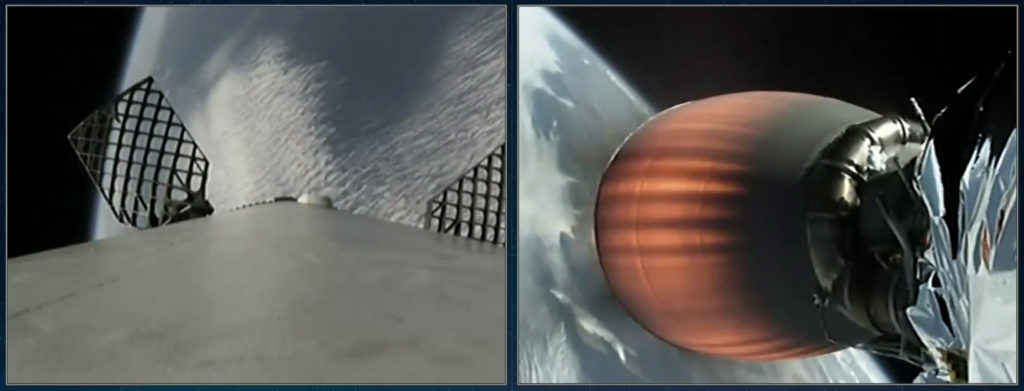
Another resounding success for the books. (SpaceX)
News
Tesla Cybertruck gets Full Self-Driving v14 release date, sort of
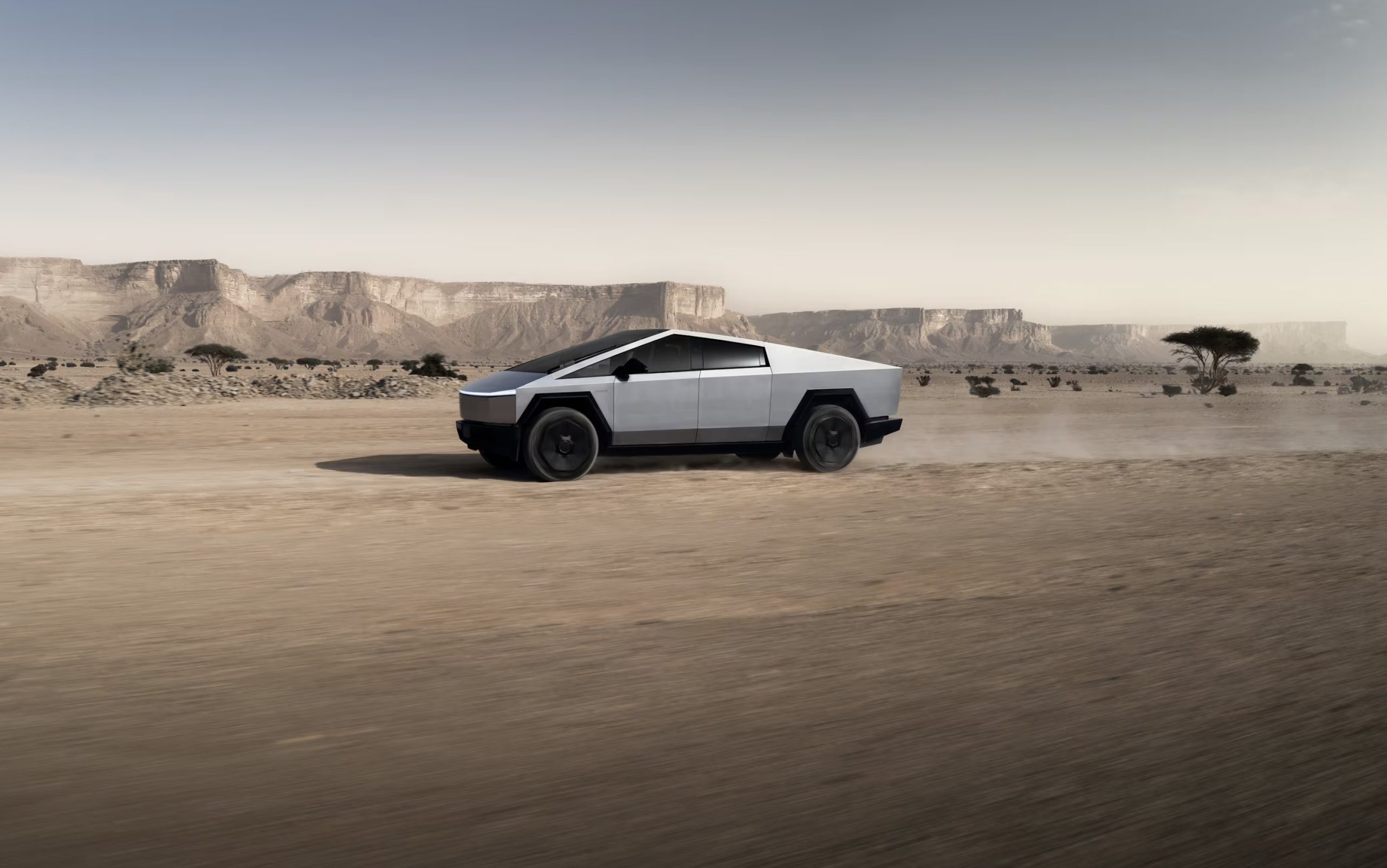
Tesla Cybertruck owners are wondering when they will get access to the company’s Full Self-Driving version 14.1 that rolled out to other owners today for the first time.
Cybertruck owners typically receive Full Self-Driving updates slightly later than other drivers, as the process for the all-electric pickup is different. It is a larger vehicle that requires some additional attention from Tesla before FSD versions are rolled out, so they will be slightly delayed. CEO Elon Musk said the all-wheel steering technically requires a bit more attention before rollout as well.
The all-wheel steering of Cybertruck requires a bit more Autopilot training
— Elon Musk (@elonmusk) October 7, 2025
After some owners got access to the v14.1 Full Self-Driving suite this morning, Cybertruck owners sought out a potential timeframe for when they would be able to experience things for themselves.
Tesla owners show off improvements with new Full Self-Driving v14 rollout
They were able to get an answer from Ashok Elluswamy, Tesla’s Head of AI, who said:
“We got you. Coming soon.”
We got you. Coming soon.
— Ashok Elluswamy (@aelluswamy) October 7, 2025
The release of FSD v14.1 for Cybertruck will not be tempered, either. Elluswamy then confirmed that Tesla would be rolling out the full-featured FSD v14 for the pickup, meaning it would be able to reverse and park itself, among other features.
Elluswamy said it would be capable of these features, which were void in other FSD releases for Cybertruck in the past.
Tesla’s rollout of FSD v14.1 brings several extremely notable changes and improvements to the suite, including more refined operation in parking garages, a new ability to choose parking preferences upon arriving at your destination, a new driving mode called “Sloth,” which is even more reserved than “Chill,” and general operational improvements.
Those who were lucky enough to receive the suite have already started showing off the improvements, and they definitely seem to be a step up from what v13’s more recent versions were capable of.
CEO Elon Musk called v14 “sentient” a few weeks back, and it seems that it is moving toward that. However, he did state that additional releases with more capabilities would be available in the coming weeks, but many owners are still waiting for this first version.
News
Tesla launches two new affordable models with ‘Standard’ Model 3, Y offerings
It is the first time Tesla has revealed any details about what it planned to launch in terms of its new, lower-cost vehicles, which are mainly aimed at countering the loss of the $7,500 EV tax credit.
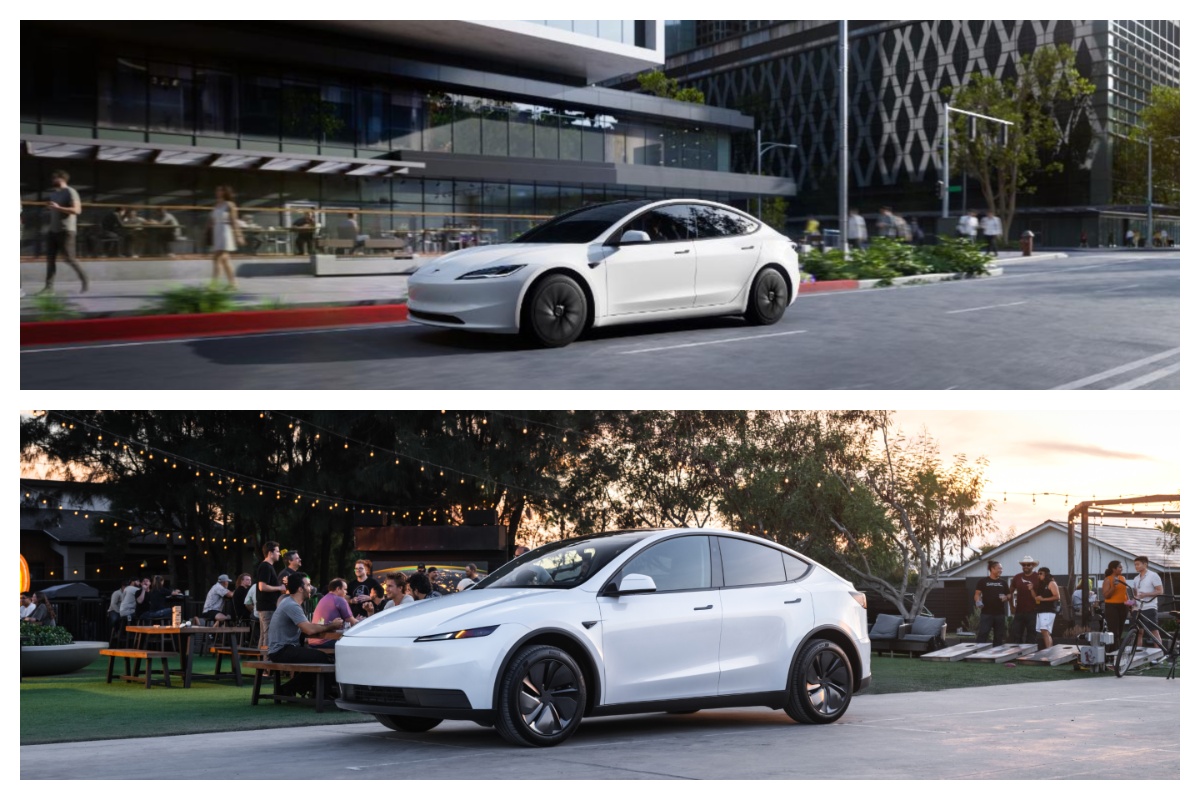
Tesla has officially launched its affordable models with the new Model 3 and Model Y ‘Standard’ versions hitting the company’s Online Design Studio on Tuesday.
It is the first time Tesla has revealed any details about what it planned to launch in terms of its new, lower-cost vehicles, which are mainly aimed at countering the loss of the $7,500 EV tax credit.
Here’s what Tesla went with for its release of the new affordable models.
Tesla Model Y ‘Standard’
The Model Y Standard is a stripped-down version of the all-electric crossover and starts at $39,990.
- Credit: Tesla
- Credit: Tesla
- Credit: Tesla
- Credit: Tesla
Deliveries are slated for November and December, the company says if you plan to order one, and it comes with a few major changes to improve efficiency and bring down cost for owners.
- New athletically tuned exterior and new alloy wheels to improve aerodynamics
- 15.4″ touchscreen in the front, the same as the other trims
- Available in three colors: Stealth Grey (free), White ($1,oo0 extra), Diamond Black ($1,500 extra)
- Textile and vegan leather interior
- Range sits at 321 miles
- New front fascia
- Covered glass roof (textile on inside)
- Windows are not acoustically laminated for a quieter cabin
- Manual mirrors and seats
- Smaller frunk
- No rear infotainment screen
- No basic Autopilot
- 69 kWh battery
- New 19″ Aperture wheels
- 0-60 MPH in 6.8 seconds
- 7 speaker stereo, down from 15 speakers in premium models
🚨 BREAKING: Tesla has launched the new Model Y ‘Standard’ for $39,990
Here’s what’s new: 🧵 pic.twitter.com/ILxbEsEniX
— TESLARATI (@Teslarati) October 7, 2025
Tesla Model 3 ‘Standard’
The Model 3 Standard was a surprise offering from Tesla, as many had only anticipated the company to refine and offer a more affordable version of the Model Y.
Coming in at $36,990, it features many of the same changes Tesla made with the Model Y “Standard,” all ways to improve price and make it less flashy than the more premium offerings.
Deliveries are also slated for November for this vehicle, and it features relatively the same stripped-down offerings as the Model Y Standard.
- Available in three colors: Stealth Grey (free), White ($1,oo0 extra), Diamond Black ($1,500 extra)
- Textile and vegan leather interior
- Range sits at 321 miles
- Covered glass roof (textile on inside)
- Manual mirrors and seats
- No rear infotainment screen
- No basic Autopilot
- 69 kWh battery
- New 19″ Aperture wheels
- 0-60 MPH in 6.8 seconds
- 7 speaker stereo, down from 15 speakers in premium models
@teslarati 🚨 Tesla’s Affordable Models are here! Let’s talk about them! #tesla #fyp #viral #teslaev #elonmusk ♬ Natural Emotions – Muspace Lofi
Elon Musk
Tesla owners show off improvements with new Full Self-Driving v14 rollout
Some of the big things that Tesla faced head-on with the development and release of v14 were navigating in parking garages and handling parking after arriving at a destination.
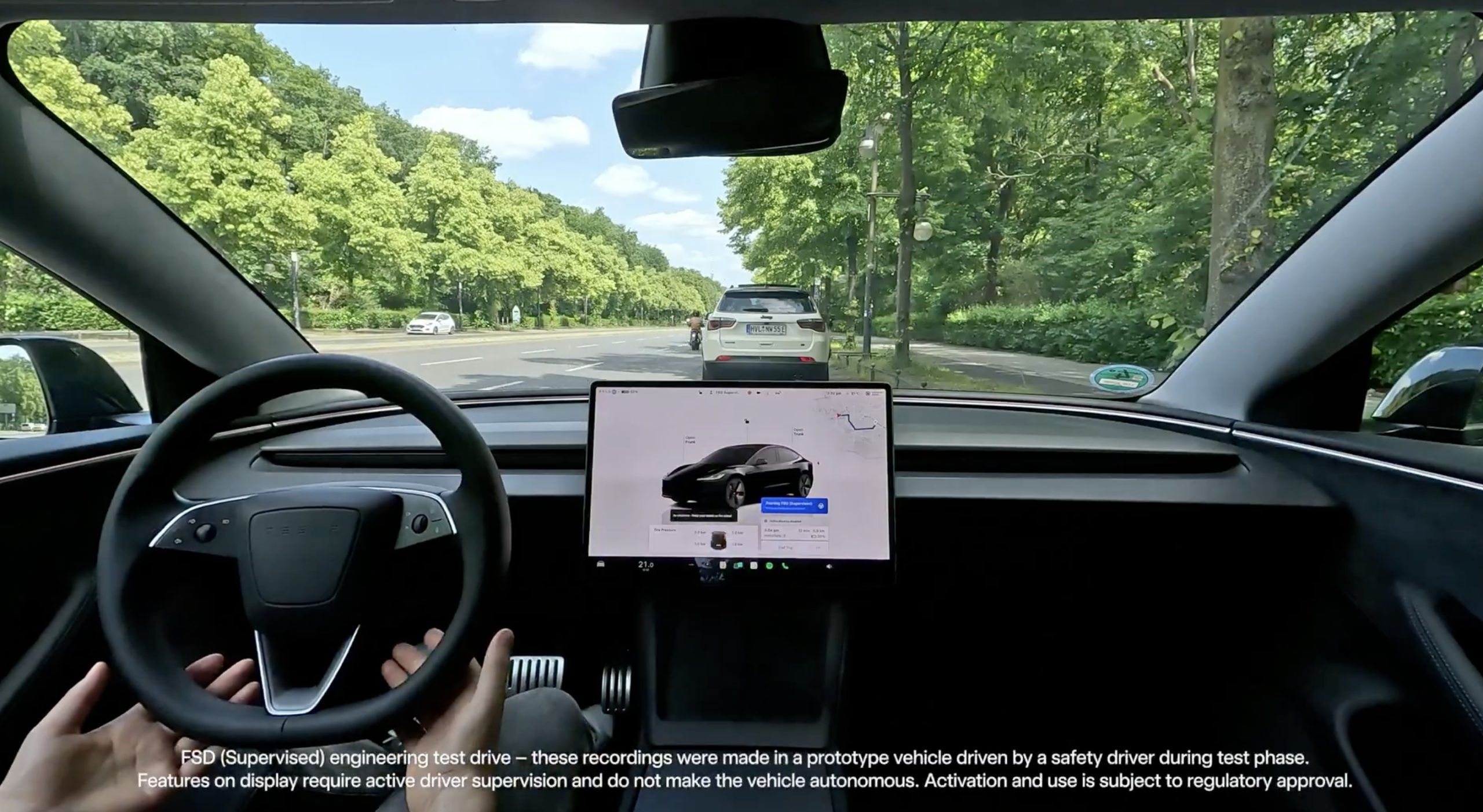
Tesla owners with access to the company’s Full Self-Driving new version, v14, which rolled out on Tuesday morning, are showcasing some of the very impressive improvements that have arrived.
CEO Elon Musk called v14 “sentient” a few weeks ahead of its rollout, claiming the newest iteration of the company’s Full Self-Driving platform would be the most accurate to date.
Tesla FSD (Supervised) V14.1 with Robotaxi-style dropoffs is here
It was obvious this narrative had Tesla owners keeping their expectations high, as there were very evidently things that needed to be improved upon that were present in v13. I wrote about several improvements I was hoping to see, and based on the release notes for v14, Tesla did have these things in the works already.
Some of the big things that Tesla faced head-on with the development and release of v14 were navigating in parking garages and handling parking after arriving at a destination.
Tesla said it was working to increase the capabilities of Summon within parking garages, as many owners believe that is where it would be the most beneficial.
While that does not appear to be part of this initial v14 rollout, it does seem Tesla is focused on improving the suite’s ability to navigate through these garages, including stopping for a ticket to enter the facility, finding a spot, and parking in an appropriate space.
It was evident this was a huge improvement based on one example from an owner who received v14:
FSD v14 navigates parking garages really well. Here’s a full clip of it leaving a parking spot, going through the garage, waiting for me to put the ticket in, and exiting.
Almost feels like it can read the signs above to go find the exit, with a complex garage here.@Tesla_AI pic.twitter.com/fv9j6LNcp6
— Zack (@BLKMDL3) October 7, 2025
If you look closely, you will even see the car shift slightly to the right when it arrives at the ticketing station, making it easier for the driver to hand over their ticket and payment. It then moves back out to the right when leaving to return to the center of the lane. It’s very intuitive.
Additionally, it appears to be more accurate when parking, thanks to improvements that enable owners to select the type of parking upon arrival at a destination.
In the v14.1 release notes, Tesla said that it has added “Arrival Options for you to select where FSD should park: in a Parking Lot, on the Street, in a Driveway, in a Parking Garage, or at the Curbside.”
One owner chose to navigate home and chose a garage to park in. Full Self-Driving performed it without any issues:
Not only can FSD 14.1 pull into my gravel driveway (no version before has done this) it can pull into the garage. pic.twitter.com/pweI5JKWHD
— Dirty Tesla (@DirtyTesLa) October 7, 2025
These are just two evident improvements so far, and there are likely many more on the way. The changes and fixes will be tracked by anyone with access to FSD v14 in the coming weeks.
-

 Elon Musk2 weeks ago
Elon Musk2 weeks agoTesla FSD V14 set for early wide release next week: Elon Musk
-
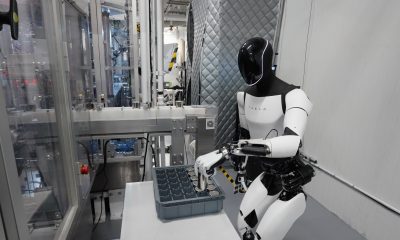
 News1 week ago
News1 week agoElon Musk gives update on Tesla Optimus progress
-
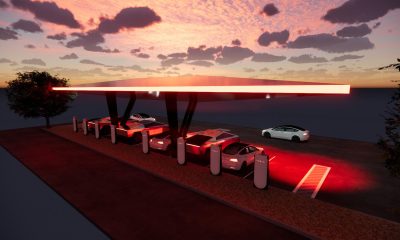
 News2 weeks ago
News2 weeks agoTesla has a new first with its Supercharger network
-
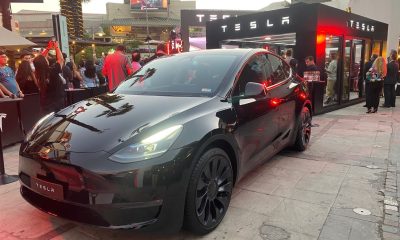
 News2 weeks ago
News2 weeks agoTesla job postings seem to show next surprise market entry
-
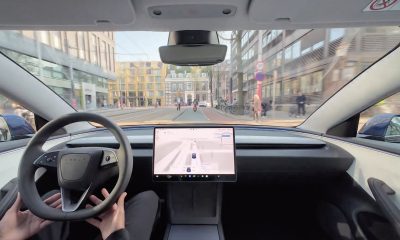
 Investor's Corner2 weeks ago
Investor's Corner2 weeks agoTesla gets new Street-high price target with high hopes for autonomy domination
-

 Lifestyle1 week ago
Lifestyle1 week ago500-mile test proves why Tesla Model Y still humiliates rivals in Europe
-
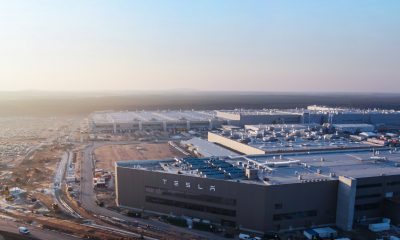
 News1 week ago
News1 week agoTesla Giga Berlin’s water consumption has achieved the unthinkable
-
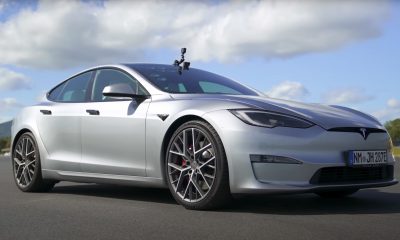
 Lifestyle1 week ago
Lifestyle1 week agoTesla Model S Plaid battles China’s 1500 hp monster Nurburgring monster, with surprising results

